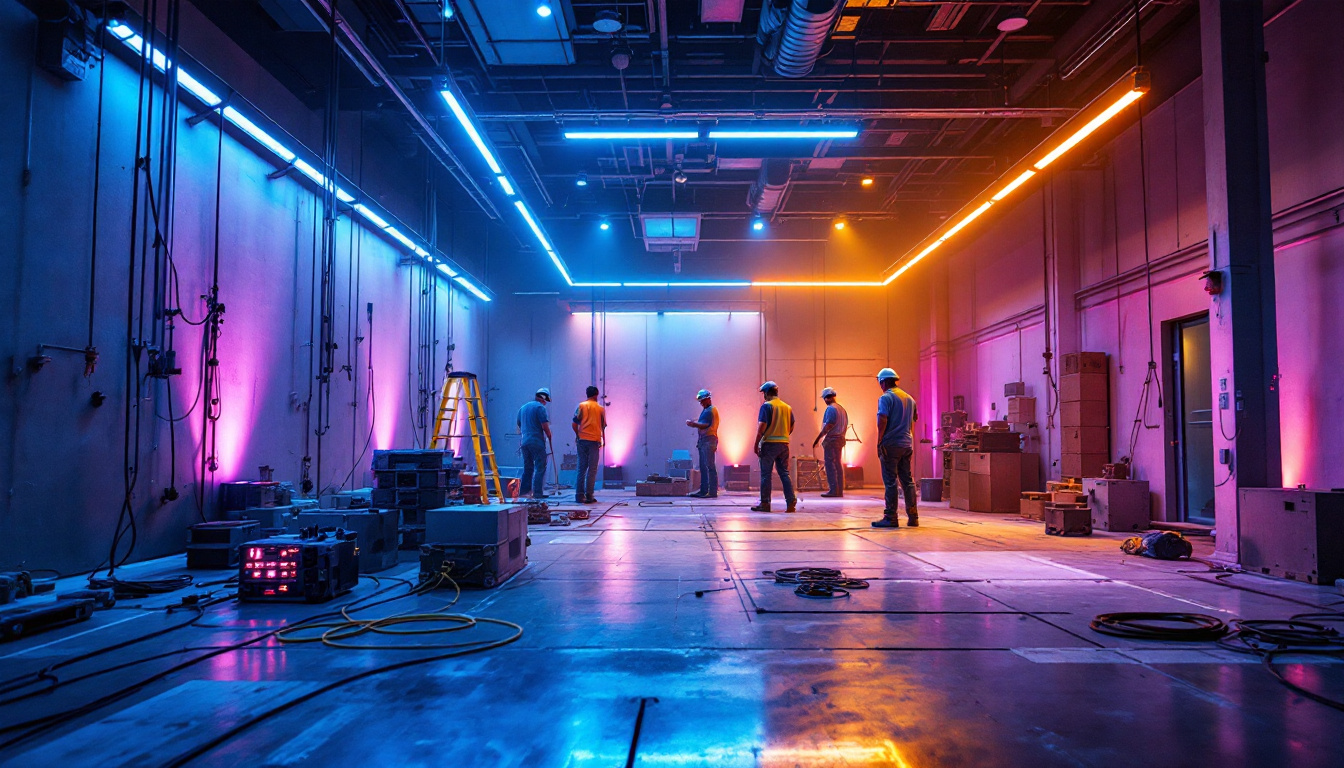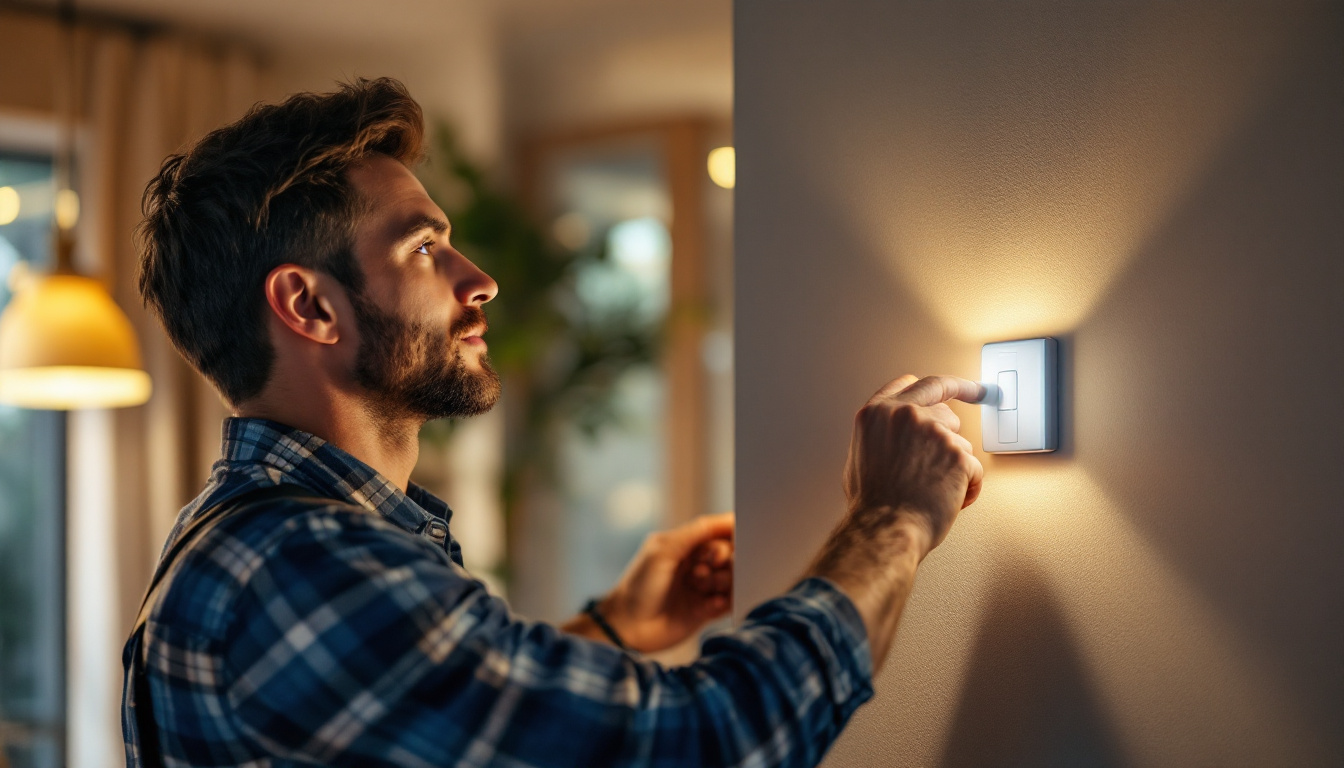
In the realm of lighting installation, the efficiency and effectiveness of the systems employed can significantly impact project outcomes. One crucial component that often goes unnoticed is the ballast. This device plays a pivotal role in regulating the current to lamps, ensuring optimal performance and longevity. Understanding the various types of ballasts and their applications can enhance the quality of lighting projects and lead to better overall results.
Ballasts are essential for controlling the electrical current in fluorescent and HID (high-intensity discharge) lighting systems. They serve multiple functions, including starting the lamp, regulating the current during operation, and providing the necessary voltage for ignition. Without a proper ballast, lighting systems can suffer from flickering, reduced lifespan, and inefficient energy use. In addition to these primary roles, ballasts also play a crucial part in enhancing the overall safety of lighting fixtures by preventing overheating and potential electrical hazards, thereby ensuring a more reliable operation in various environments.
There are primarily two types of ballasts: magnetic and electronic. Each type has its own set of characteristics that can influence the performance of a lighting installation. Understanding these differences is vital for making informed decisions that align with specific lighting needs and preferences, as well as the overall energy management strategy of a facility.
Magnetic ballasts have been around for decades and are known for their simplicity and reliability. They use inductance to regulate current and typically consist of a transformer and a capacitor. While they are generally less expensive, magnetic ballasts can be bulkier and heavier, which may pose challenges during installation. Moreover, they often produce a noticeable hum during operation, which can be a drawback in noise-sensitive environments. Despite these limitations, many users appreciate their robust construction and the fact that they are less susceptible to voltage fluctuations, making them a viable option for certain applications.
On the other hand, electronic ballasts are more modern and efficient. They use electronic circuits to control the current, resulting in a more stable light output and reduced energy consumption. Electronic ballasts are typically lighter and smaller, making them easier to install and integrate into various lighting designs. Additionally, they often provide better performance in terms of flicker-free operation and improved color rendering. This enhanced performance is particularly beneficial in settings where accurate color representation is essential, such as art galleries or retail spaces, where merchandise display relies heavily on optimal lighting conditions.
When selecting a ballast for a lighting installation project, several factors should be considered. The type of lamp being used, the specific application, and the desired lighting quality all play a role in determining the most suitable ballast. Furthermore, understanding the environmental conditions where the lighting will be installed can also influence the choice, as some ballasts are better suited for damp or extreme temperature environments, ensuring longevity and reliability.
It is crucial to ensure that the ballast is compatible with the type of lamp being installed. For instance, certain fluorescent lamps require specific electronic ballasts designed to work with them. Failure to match the ballast with the lamp can lead to suboptimal performance and potential damage to the lighting system. Additionally, some ballasts are designed to work with multiple lamp types, offering versatility for projects that may incorporate different lighting technologies. This flexibility can be particularly advantageous in retrofit applications where existing fixtures are being upgraded to more energy-efficient options.
The intended use of the lighting system also influences ballast selection. For example, in commercial settings where lighting is on for extended periods, energy efficiency becomes a priority. In such cases, electronic ballasts may be the better choice due to their lower energy consumption and longer lifespan. Moreover, the specific lighting requirements of the space, such as brightness levels and color temperature, should guide the selection process, ensuring that the chosen ballast not only meets functional needs but also enhances the overall aesthetic and comfort of the environment. In educational institutions, for instance, the right ballast can contribute to better learning conditions by providing adequate illumination without causing glare or eye strain.
The integration of ballasts into lighting installation projects offers numerous advantages that can enhance both performance and efficiency. Understanding these benefits can help lighting contractors make informed decisions and improve project outcomes.
One of the most significant benefits of using ballasts, particularly electronic ones, is energy efficiency. By regulating the current supplied to the lamp, ballasts can reduce energy consumption, leading to lower utility bills for clients. This is especially important in large-scale installations where even small savings can add up over time.
Ballasts also contribute to improved lamp performance. By providing a stable current, they help maintain consistent light output and color quality. This is crucial in environments where lighting quality is paramount, such as retail spaces or art galleries. A well-functioning ballast can enhance the overall aesthetic appeal of a space, making it more inviting and visually pleasing.
Another advantage of using the right ballast is the extended lifespan of the lighting system. By preventing issues such as flickering and overheating, ballasts help prolong the life of both the lamps and the fixtures. This not only reduces replacement costs but also minimizes maintenance efforts, allowing contractors to focus on other aspects of the project.
Proper installation of ballasts is essential to ensure optimal performance and longevity. Adhering to best practices during the installation process can prevent common issues and enhance the effectiveness of the lighting system.
Each ballast comes with specific manufacturer guidelines that outline installation procedures, wiring diagrams, and compatibility information. Following these guidelines is crucial to avoid potential problems and ensure that the ballast operates as intended. Contractors should take the time to read and understand these instructions before beginning the installation.
When installing ballasts, it is essential to consider the wiring and circuit load. Proper gauge wiring should be used to accommodate the ballast’s electrical requirements. Overloading a circuit can lead to overheating and failure, undermining the benefits of the ballast. Ensuring that the circuit can handle the load is a critical step in the installation process.
Once the ballast is installed, testing the system is vital to confirm that everything is functioning correctly. This includes checking for flickering, color consistency, and overall light output. Addressing any issues during the testing phase can save time and resources in the long run, ensuring a successful installation.
While ballasts are integral to lighting installations, they can present challenges that contractors must navigate. Being aware of these common issues and their solutions can help ensure smoother project execution.
Flickering lights are a common complaint in lighting installations, often attributed to faulty ballasts. This issue can be particularly frustrating for clients, as it detracts from the overall quality of the lighting. To address flickering, contractors should first check the compatibility of the ballast with the lamp. If they are mismatched, replacing the ballast with a compatible one can resolve the issue.
Overheating is another challenge that can arise from improper ballast installation. If a ballast is not adequately ventilated or is overloaded, it may overheat, leading to premature failure. Ensuring that the ballast is installed in a well-ventilated area and that the circuit load is appropriate can mitigate this risk. Regular maintenance checks can also help identify potential overheating issues before they become critical.
Some ballasts, particularly magnetic ones, can produce audible humming or buzzing sounds during operation. This noise can be distracting in quiet environments, such as offices or libraries. To combat this issue, contractors may consider using electronic ballasts, which tend to operate more quietly. Additionally, ensuring that the ballast is securely mounted can help reduce vibrations that contribute to noise.
The evolution of ballast technology is ongoing, with advancements aimed at improving efficiency, performance, and user experience. Staying informed about these developments can provide contractors with a competitive edge in the lighting installation market.
One of the most exciting trends in ballast technology is the emergence of smart ballasts. These devices can communicate with building management systems and allow for more precise control over lighting levels. This capability not only enhances energy efficiency but also enables dynamic lighting solutions tailored to specific needs. As smart technology continues to gain traction, integrating smart ballasts into installations will likely become increasingly common.
As the push for sustainability grows, the integration of ballasts with renewable energy sources, such as solar power, is becoming more prevalent. This synergy can lead to significant energy savings and reduced environmental impact. Contractors who embrace these technologies can offer clients innovative solutions that align with modern sustainability goals.
Energy efficiency standards for lighting systems are continually evolving, prompting manufacturers to develop more efficient ballasts. Staying abreast of these changes is crucial for contractors, as compliance with regulations can influence project specifications and costs. By utilizing the latest ballast technology, contractors can ensure that their installations meet or exceed these standards, providing clients with peace of mind and long-term savings.
Ballasts play a vital role in the success of lighting installation projects, influencing energy efficiency, performance, and longevity. By understanding the different types of ballasts, their benefits, and best practices for installation, lighting contractors can enhance their projects and provide superior solutions for their clients. As technology continues to advance, staying informed about the latest developments in ballast technology will be essential for maintaining a competitive edge in the industry.
Incorporating modern ballasts into lighting designs not only improves the quality of light but also contributes to the overall sustainability of projects. By prioritizing energy efficiency and performance, contractors can deliver installations that meet the evolving demands of the market while ensuring client satisfaction. The future of lighting installation is bright, and ballasts will undoubtedly remain a key component in achieving successful outcomes.
Ready to elevate your lighting installations with high-quality ballasts that promise energy efficiency and performance? Look no further than LumenWholesale. We specialize in providing contractors with spec-grade lighting products, including a wide range of ballasts, at unbeatable wholesale prices. Say goodbye to local distributor markups and hello to premium lighting with free shipping on bulk orders. Wholesale Lighting at the Best Value is just a click away. Upgrade your lighting projects with LumenWholesale today and experience the difference quality makes.

Discover the essential guide for lighting contractors on sensor light switches.

Discover the ultimate guide to dimming LED lights with ease.

Discover how T5 bulbs can revolutionize your lighting projects by saving time and reducing costs.

Discover the hidden aspects of motion sensor lighting that even seasoned contractors might miss.